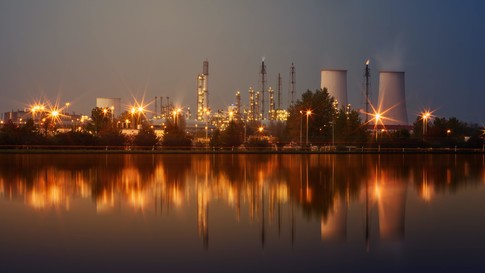While most research suggests that the majority of fossil molecules in energy applications will be replaced with clean electrons rather than green molecules, it is becoming clear that direct electrification of everything would be technically impractical and economically burdensome.
Spearheading efforts to scale-up hydrogen, the EU – as well as individual member states including Germany, France, the Netherlands, Poland, Portugal and Spain – have already presented their hydrogen strategy documents, with more still under development.
The Backbone would be 75% based upon repurposed gas pipelines, and 25% on new, purpose built hydrogen pipelines.
China is the largest hydrogen producer and consumer in the world, the central government first endorsed hydrogen in the 2019 State Council work report.
Energy consumption and production contribute to two-thirds of global emissions, and 81% of the global energy system is still based on fossil fuels, the same percentage as 30 years ago.
The World Economic Forum’s Energy Transition Index, which ranks 115 economies on how well they balance energy security and access with environmental sustainability and affordability, shows that the biggest challenge facing energy transition is the lack of readiness among the world’s largest emitters, including US, China, India and Russia.
Additionally, the Mission Possible Platform is working to assemble public and private partners to further the industry transition to set heavy industry and mobility sectors on the pathway towards net-zero emissions.
Following a rapid industrialization process starting in 1978, China has now formed a comprehensive modern industrial system comprising 41 large industrial categories, 207 medium ones and 666 small ones, thus is the only country in the world that has all the industrial categories based on the industrial classification of the United Nations.
Ideally, mutually beneficial international cooperation on hydrogen industrial clusters between China and Europe could help move the clean energy transition agenda forward.
Assuming that electricity will replace much of current demand for natural gas, Agora Energiewende, an energy transition think tank based in Berlin, together with its partner AFRY Management Consulting, have taken up the task of estimating inescapable industrial hydrogen demand, which arises from applications where electricity would not be a practical solution in the foreseeable future.
First, we calculated the trajectories for such hydrogen demand up to 2050, by which time refineries will have been phased out in the EU.
The biggest demand hub is found in North Rhine-Westphalia , and the Netherlands, where a large cluster of chemical and petrochemical installations is already located, along with steel plants.
Based on envisaged feedstock and chemical reagent demand for hydrogen, Agora identified four industrial clusters where there is a clear, no-regret case for repurposing or building a hydrogen pipeline network.
However, total European demand for green hydrogen from all sectors in 2050 is likely to be in the order of 1,000-2,000 TWh per year, the equivalent of only a fraction of the current natural gas consumption of 4,600 TWh.
